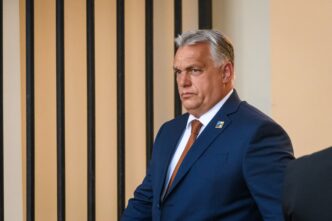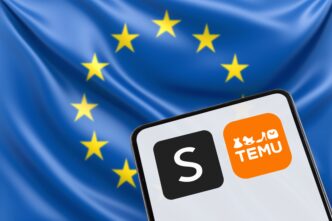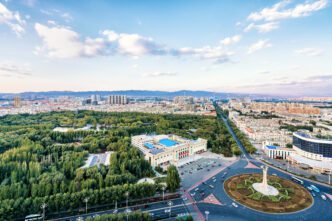Executive Summary
- South Korean President Lee Jae Myung and President Donald Trump reached an agreement on a 15% tariff rate for South Korean exports and $100 billion in energy investments.
- Concerns among Lee’s staff about a potential “Zelensky moment” arose due to Trump’s “threatening post” on Truth Social and remarks about South Korea’s internal investigations prior to the meeting.
- President Lee stated he understood Trump’s negotiation technique, having studied “The Art of the Deal,” anticipating initial difficult conditions but ultimately reasonable conclusions.
The Story So Far
- The meeting between South Korean President Lee Jae Myung and Donald Trump took place following significant political upheaval in South Korea, where former President Yoon Suk Yeol was removed from office after attempting to invoke martial law. Ahead of their discussion, Donald Trump publicly questioned the situation in Seoul on Truth Social, describing it as a “Purge or Revolution,” which raised concerns among President Lee’s staff about a potentially confrontational interaction. However, President Lee had prepared for the negotiations by studying Donald Trump’s negotiation style, anticipating an initial tough stance that would ultimately lead to a more reasonable agreement.
Why This Matters
- Despite initial pre-meeting concerns stemming from President Trump’s public criticism of South Korea’s internal affairs, the agreement on a 15 percent tariff for South Korean exports and $100 billion in energy investments signifies a significant economic realignment between the two nations, potentially impacting trade and energy sectors. This outcome, reached amidst diplomatic tension, ultimately reinforces the enduring “ironclad alliance” and demonstrates a pragmatic approach to strengthening the bilateral partnership across economic and strategic fronts.
Who Thinks What?
- President Donald Trump expressed initial concerns about internal affairs in South Korea, questioning the situation on Truth Social, but ultimately reached an agreement on a 15 percent tariff rate for South Korean exports and $100 billion in energy investments, maintaining his stance on the agreed terms.
- South Korean President Lee Jae Myung approached the meeting with an understanding of Trump’s negotiation style, having studied “The Art of the Deal,” and aimed to strengthen the “ironclad alliance” into a “future-oriented, comprehensive strategic alliance” with expanded partnership across various sectors.
- President Lee’s staff held pre-meeting concerns about a potential “Zelensky moment” or public blowup, following Trump’s “very threatening post” and remarks questioning South Korea’s investigations and U.S. base searches.
South Korean President Lee Jae Myung’s Monday meeting with President Donald Trump exceeded expectations, despite pre-meeting concerns among Lee’s staff about a potential “Zelensky moment.” The leaders ultimately reached an agreement on a 15 percent tariff rate for South Korean exports and $100 billion in energy investments, aiming to strengthen the bilateral alliance.
Concerns arose after President Trump posted a “very threatening post” on Truth Social ahead of the meeting, which he then followed with remarks during a press gaggle about South Korea’s investigations into its previous government and the search and seizure of U.S. bases. President Lee’s staff reportedly worried about a potential public blowup, reminiscent of the interaction between Trump and Ukrainian President Volodymyr Zelensky.
Earlier that day, Trump questioned the situation in Seoul on Truth Social, stating, “WHAT IS GOING ON IN SOUTH KOREA? Seems like a Purge or Revolution. We can’t have that and do business there.” He acknowledged his upcoming meeting with the “new President” in the same post.
These comments came months after former South Korean President Yoon Suk Yeol was removed from office by a constitutional court following an attempt to invoke martial law, a move that drew global attention and criticism. Despite the brewing tensions, President Lee arrived in Washington prepared to negotiate.
Lee stated that he understood Trump’s negotiation technique, having studied his 1987 book, “The Art of the Deal.” He noted that Trump often presents difficult conditions initially but ultimately avoids unreasonable conclusions, a pattern Lee observed in previous negotiations.
The discussions culminated in an agreement between the U.S. and South Korea on a 15 percent tariff rate for exports from Seoul, coupled with $100 billion in energy investments. While President Trump acknowledged some “qualms” from the South Korean side, he maintained his stance on the agreed terms.
President Lee expressed his hope for maintaining prosperous relations and expanding the bilateral partnership across security, economy, and technology. He emphasized the “ironclad alliance” as a “future-oriented, comprehensive strategic alliance” with “unlimited potential” for growth.








